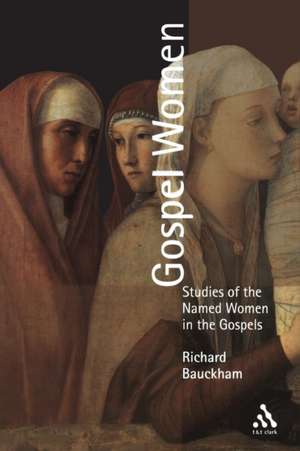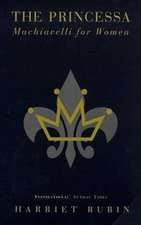Gospel Women: Studies Of The Named Women In The Gospels
Autor Emeritus Professor Richard Bauckhamen Limba Engleză Paperback – 30 iun 2002
There have been many studies of women in the Gospels, but this is a new kind of book on the subject. Rather than offering a general overview or focusing on a single theme, Richard Bauckham examines the individual women who appear in the Gospels and the specific passages in which they appear.
This unique approach reveals much more about these characters than previous studies have assumed. Employing historical and literary readings of the biblical texts, Bauckham successfully captures the particularity of each woman he studies. An opening look at the Old Testament Book of Ruth introduces the possibilities of reading Scripture from a woman's perspective. Other studies examine the women found in Matthew's and Luke's geneaologies, the prophet Anna, Mary of Clopas, Joanna, Salome, and the women featured in the Gospel resurrection narrative. Bauckham's work is not dominated by a feminist agenda and does not presume in advance that the Gospel texts support patriarchal oppression. He does, however, venture some of the new and surprising possibilities that arise when the texts are read from the perspective of their women characters.Preț: 467.86 lei
Preț vechi: 575.82 lei
-19% Nou
Puncte Express: 702
Preț estimativ în valută:
89.53€ • 94.14$ • 73.97£
89.53€ • 94.14$ • 73.97£
Carte tipărită la comandă
Livrare economică 17 aprilie-01 mai
Preluare comenzi: 021 569.72.76
Specificații
ISBN-13: 9780567088703
ISBN-10: 0567088707
Pagini: 368
Dimensiuni: 138 x 216 x 28 mm
Greutate: 0.51 kg
Editura: Bloomsbury Publishing
Colecția T&T Clark
Locul publicării:London, United Kingdom
ISBN-10: 0567088707
Pagini: 368
Dimensiuni: 138 x 216 x 28 mm
Greutate: 0.51 kg
Editura: Bloomsbury Publishing
Colecția T&T Clark
Locul publicării:London, United Kingdom
Descriere
Employing historical and literary readings of biblical texts, this book examines the women who appear in the Gospels, aiming to capture the particularity of each woman studied. Although not dominated by a feminist agenda, it reveals surprising possibilities by reading from the women's perspectives.
















